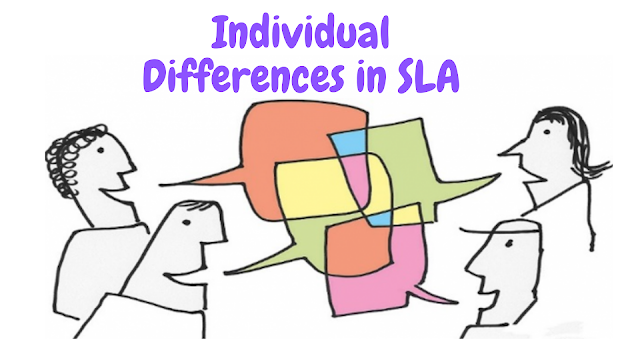Indıvıdual Dıfferences ın SLA!
Hello from the 43rd day of my personal quarantine!
Hope you and your loved ones well.In this post. I will briefly mention personal differences in SLA.
SLA has universal common aspects.(developmental sequences,acquisition orders,UG,etc.)Social aspects also play an important role in the SLA process. However, individual differences also affect it. Human beings are both similar and unique. We can basically divide individual differences into categories.
 1.AGE
1.AGEWe can divide age into 3 groups;
-Young learners: Their attention span is limited. They are ego-centric.
-Adolescence: They are unmotivated and uncooperative so they are poor language learners.
-Adult: They have so many barriers. They have life experiences, past language experiences, and abstract thoughts. They are more disciplined. They are under the slowing effect of aging.
Critical Period Hypothesis comes into play with age.
 2.MOTIVATION
2.MOTIVATIONWe can basically see motivation in 2 categories;
Intrinsic motivation and extrinsic motivation. Many learners are motivated by a mixture of both intrinsic and extrinsic motivation, as they are often required to learn a language by their school or company (extrinsic motivation), at the same time as being personally interested in the new language and culture (intrinsic motivation). In many cases, intrinsic motivation can develop as the learners begin to make progress and realize how exciting it is to be able to communicate in another language. Besides, where we live in, teacher, the method that is used is also important for motivation.
3.APTITUDE/INTELLIGENT TYPES
 Aptitude is for measuring intellectual ability. It means cognitive abilities. Some of the learners may have interpersonal intelligence. That type of learner is more outstanding. Some of them have intrapersonal intelligence types. They are most comfortable with their own. In 1983, in order to capture the full range of abilities and talents that people possess, Gardner theorizes that people do not have just an intellectual capacity, but have many kinds of intelligence, including musical, interpersonal, spatial-visual, and linguistic intelligence. While a person might be particularly strong in a specific area, such as musical intelligence, he or she most likely possesses a range of abilities. For example, an individual might be strong in verbal, musical, and naturalistic intelligence. Therefore, sometimes speaking and sometimes writing activities should have done so that teachers can appeal to many types of intelligence.
Aptitude is for measuring intellectual ability. It means cognitive abilities. Some of the learners may have interpersonal intelligence. That type of learner is more outstanding. Some of them have intrapersonal intelligence types. They are most comfortable with their own. In 1983, in order to capture the full range of abilities and talents that people possess, Gardner theorizes that people do not have just an intellectual capacity, but have many kinds of intelligence, including musical, interpersonal, spatial-visual, and linguistic intelligence. While a person might be particularly strong in a specific area, such as musical intelligence, he or she most likely possesses a range of abilities. For example, an individual might be strong in verbal, musical, and naturalistic intelligence. Therefore, sometimes speaking and sometimes writing activities should have done so that teachers can appeal to many types of intelligence.4.LEARNER STYLES
The term “learning styles” speaks to the understanding that every student learns differently. Technically, an individual’s learning style refers to the preferential way in which the student absorbs, processes, comprehends, and retains information. We can basically list them as;
-Convergers: They are individualistic, independent. They avoid communication. They are self-reliant and they are aware that they can achieve.
-Communicative: They prefer a social approach to learning. They need personal feedback and interaction, they learn well from discussion and group activities.
-Conformist: They are dependent on someone else such as a friend, teacher, etc. They need the approval of them.
-Introverted
-Extraverted
-Concrete: They like communication. They love learning by doing. It does not matter whether they are individuals or groups. They use active and direct means of taking in and processing information. They are interested in information that has immediate value, is spontaneous, and willing to take risks. They like variety and a constant change of pace, dislike routine learning, and written work, they prefer verbal or visual experiences. They like to be entertained and to be physically involved in learning.
 5.LANGUAGE LEVEL
5.LANGUAGE LEVELLearner's language level should be considered. The language level of the student should not be overlooked in the activities.
See you.
STAY HOME STAY SAFE!



Yorumlar
Yorum Gönder